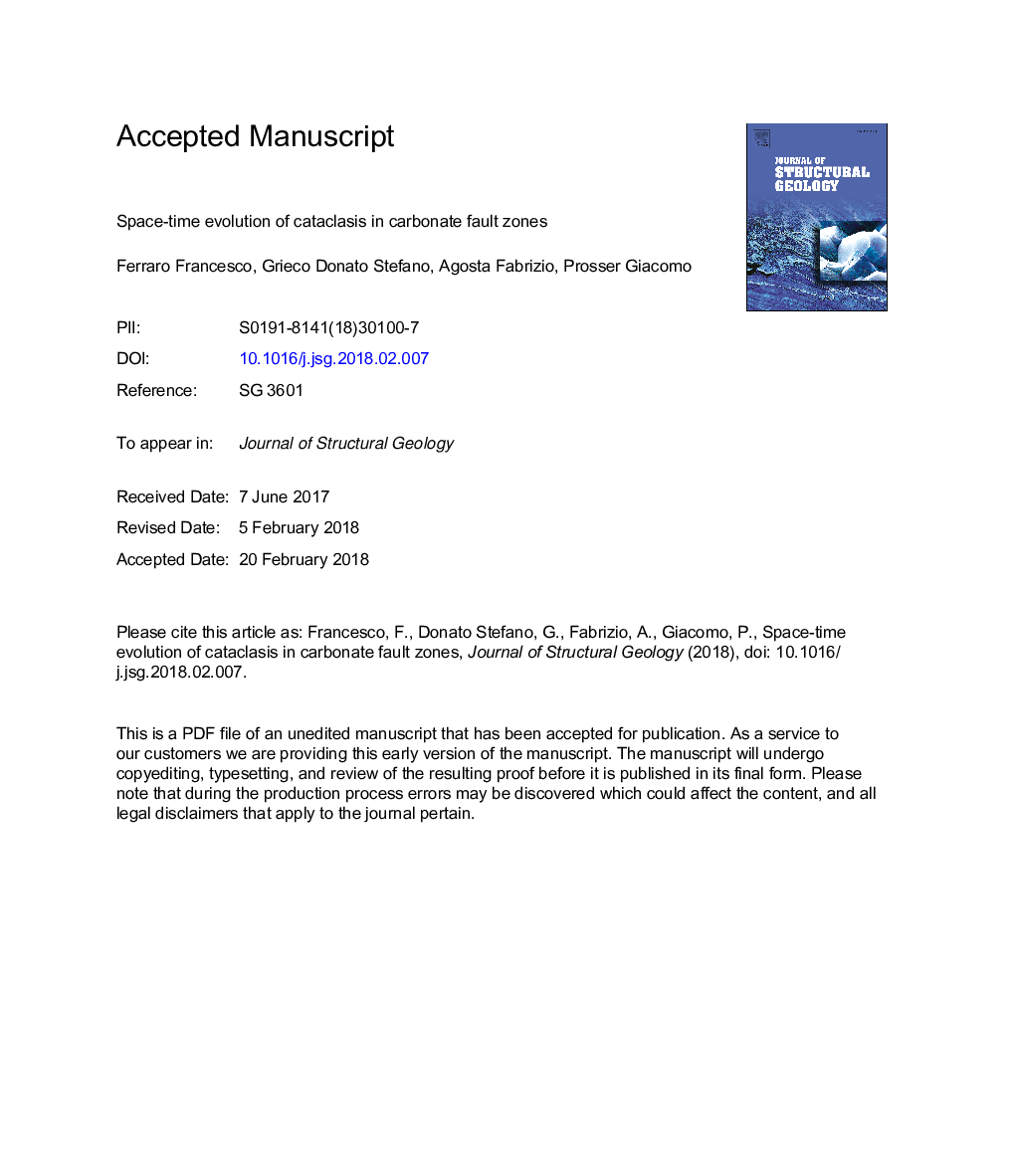| Article ID | Journal | Published Year | Pages | File Type |
|---|---|---|---|---|
| 8914429 | Journal of Structural Geology | 2018 | 56 Pages |
Abstract
The present contribution focuses on the micro-mechanisms associated to cataclasis of both calcite- and dolomite-rich fault rocks. This work combines field and laboratory data of carbonate fault cores currently exposed in central and southern Italy. By first deciphering the main fault rock textures, their spatial distribution, crosscutting relationships and multi-scale dimensional properties, the relative timing of Intragranular Extensional Fracturing (IEF), chipping, and localized shear is inferred. IEF was predominant within already fractured carbonates, forming coarse and angular rock fragments, and likely lasted for a longer period within the dolomitic fault rocks. Chipping occurred in both lithologies, and was activated by grain rolling forming minute, sub-rounded survivor grains embedded in a powder-like carbonate matrix. The largest fault zones, which crosscut either limestones or dolostones, were subjected to localized shear and, eventually, to flash temperature increase which caused thermal decomposition of calcite within narrow (cm-thick) slip zones. Results are organized in a synoptic panel including the main dimensional properties of survivor grains. Finally, a conceptual model of the time-dependent evolution of cataclastic deformation in carbonate rocks is proposed.
Related Topics
Physical Sciences and Engineering
Earth and Planetary Sciences
Geology
Authors
Francesco Ferraro, Donato Stefano Grieco, Fabrizio Agosta, Giacomo Prosser,
